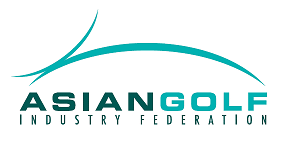Unveiling of SICC’s The Bukit Clubhouse
Singapore: The Singapore Island Country Club has officially opened the new Clubhouse – The Bukit after three years ...

Berkshire, England: Over time, areas of managed turf can build up excessive levels of unwanted salts which are either dissolved in the soil solution or adsorbed onto soil particles.
These salts come from a number of sources, including natural mineralisation of rootzone parent material, irrigation water (especially boreholes drawn out of calcareous rock), fertiliser applications and proximity to the sea.
Salts affect plant growth due to increasing soil osmotic pressure and interference with plant nutrition. A high salt concentration in soil solution reduces the ability of plants to acquire water.
“It is important for turf managers to ensure that their soils do not have excessive levels of salt in the root zone, particularly where lower quality irrigation water is used or in coastal areas,” said Brian Croose, ASEAN Regional Manager at Indigrow, a Full Business Member of the Asian Golf Industry Federation.
Indigrow has developed a product, RePhlex LS, for soils which are too high in salt, which has been trialled and compared against other similar products.
Croose added: “As this issue is related to water management, our product, RePhlex LS, and the competitor product can be classed as wetting agents. The wetting agents in RePhlex LS are naturally derived organic acids.
“The active ingredients help spread the irrigation or rain water across a wider interface, slowing the water movement throughout the soil profile. This allows more of the excess salts to be leached from the rootzone.

“They do not affect the overall amount of water that drains through, just the speed at which it percolates. Unlike most penetrate synthetic wetting agents which actually speed up the flow of water.”
Recent trials at the University of Lincoln in the United Kingdom compared another synthetic wetting agent (Product H) against RePhlex LS.
Rephlex LS was the most effective in slowing down the passage of water, being 20% slower than the control.
Product H is from a major turf wetting agent manufacturer. Although claims are made for its use as a water management product, it moves water more quickly thorough the profile, 5% quicker than the plain water control.
In order to determine the effectiveness of the various products in removing dissolved salts, the Electrical Conductivity (EC) of the drainage water was measured, this was compared to water alone. The higher the reading the more dissolved salts are removed.

RePhlex LS removed 27% more salts than plain water. Product H did not remove any more salts over and above that with plain water.
Croose said: “Being an organically derived acid, RePhlex LS will react with carbonate and bicarbonates and give a number of agronomic benefits, primarily by improving soil structure, water penetration and gaseous exchange and at the same time releasing calcium within the soil making it available for plant growth.”
*For more details on the trial results, please visit www.indigrow.com or email to growth@indigrow.com
Singapore: The Singapore Island Country Club has officially opened the new Clubhouse – The Bukit after three years ...
Arizona, United States: Troon has announced a relationship with INNESS in Accord, New York.
Arizona, United States: Toro has debuted its latest advancement in golf course irrigation heads, the Performance Seri...
